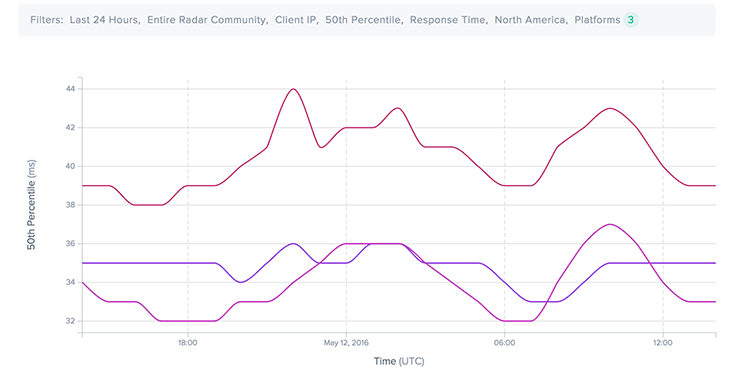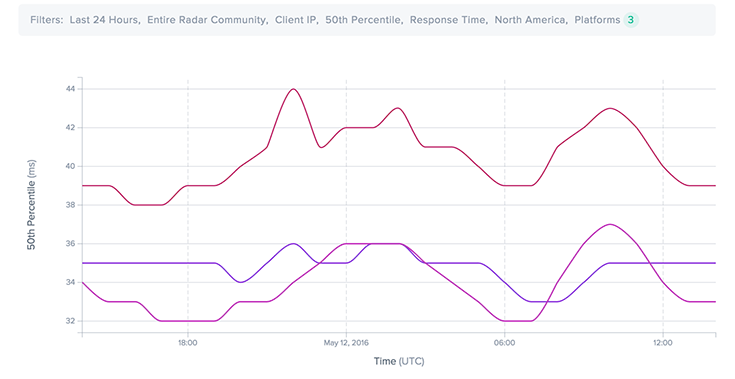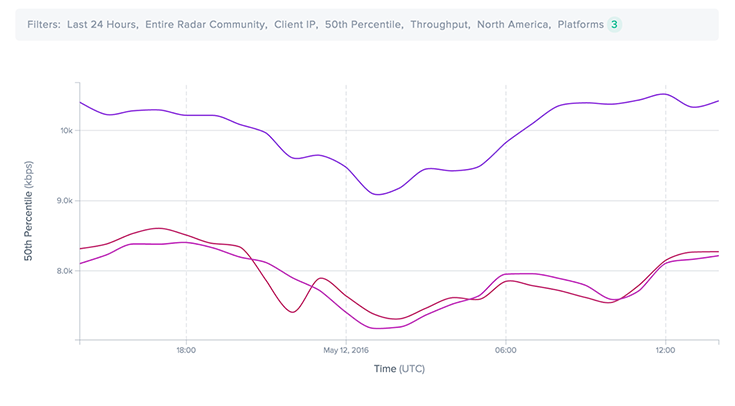
Using TTLB to Measure HTTP Performance
Your site should load as fast as possible. Even a 1 sec. delay in page response could result in a 7% reduction in conversions.
Is your site fast enough?
Even if you’re using a CDN to boost web performance, an underperforming CDN will still degrade your delivery. Testing is critical in determining a CDN’s actual performance and availability. Any CDN can claim to be “the fastest CDN on the planet,” but the only way to evaluate a CDN’s performance is to test and measure it consistently.
This guide will provide an overview of which metrics effectively evaluate CDN performance and availability and what tools to use to monitor your web performance—with or without a CDN (using Cedexis Radar and WebPageTest.org.)
The Best Metrics to Measure CDN Performance
-Throughput a/k/a Time To Last Byte (TTLB)
-Availability
What’s the difference between TTFB and TTLB?
TTFB is the amount of time it takes to receive the first byte from the server. When a browser sends a request, it must then get to a server, calling another server or service, a database, or some other logic. When complete, the server starts sending back the response to the browser. So TTFB actually measures how long the browser request waited for the server to finish running its logic. In terms of end-user experience, this is essentially a useless metric. By now, it should be clear that even if the first byte is near-instant unless ALL the bytes are delivered, it’s not relevant from the end-user perspective. TTLB is when the last byte is received by the browser (or client). Only then does the computer assemble the data and make it into something digestible. Also, given that a web page has many components (CSS, Javascript, images, etc.), there will be a TTLB for each of them. Only after the last byte of every component is received by the browser/client–can the user actually enjoy the web page or app.
What causes a slow TTFB and TTLB?
-Overloaded origin server
-Geographic distance between request and content’s origin servers
-Connectivity issues
Cedexis Radar and Real-User Monitoring (RUM)
-Many commercial services available: New Relic, Compuware Gomez, Dynatrace, Cedexis, SmartBear, Pingdom, Soasta, etc.
-Key Measurements: response time, throughput, error rate, page load time
-Generates actionable alerts
Tests: TTFB (HTTP Response Time) vs. TTLB (HTTP 100KB File Throughput Performance)

HTTP Response Time (TTFB)

HTTP 100KB Throughput/TTLB
Some web performance experts argue that TTFB is more important for the user than TTLB since web browsers may start displaying files as soon as the first bytes are received—for FEO optimization.
The goal is to get the last byte to the user as quickly as possible. Everything else is noise.
How does your web performance stack up? Contact us to schedule an appointment with our CDN experts, who can evaluate your needs and determine a custom-fit solution for you.
Product Updates
Explore our latest updates and enhancements for an unmatched CDN experience.
Book a Demo
Discover the CacheFly difference in a brief discussion, getting answers quickly, while also reviewing customization needs and special service requests.
Free Developer Account
Unlock CacheFly’s unparalleled performance, security, and scalability by signing up for a free all-access developer account today.
CacheFly in the News
Learn About
Work at CacheFly
We’re positioned to scale and want to work with people who are excited about making the internet run faster and reach farther. Ready for your next big adventure?




